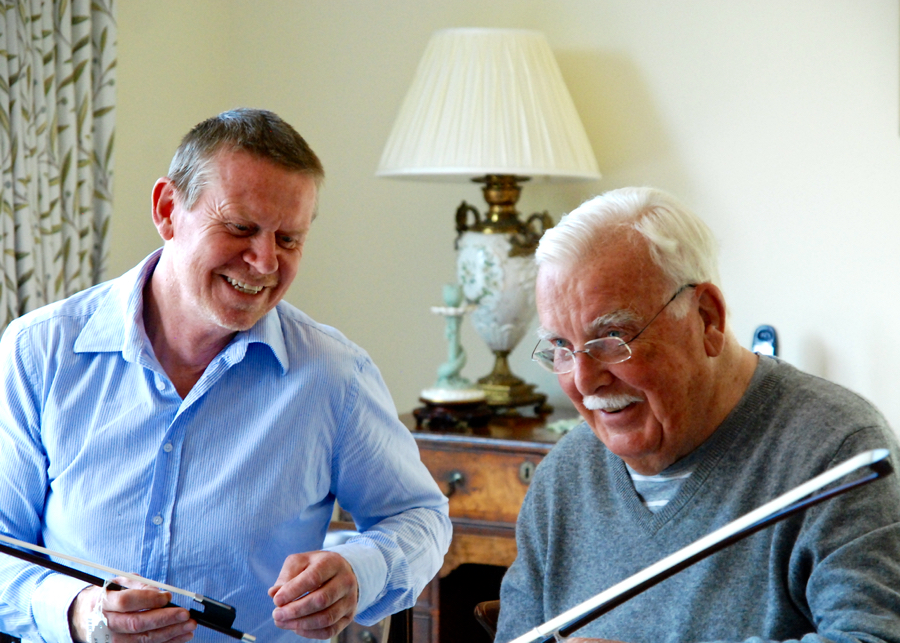During the 20th century the firm of W.E. Hill & Sons was the world’s leading dealership of fine violins, its Bond Street shop handling a constant stream of instruments by Stradivari and Guarneri – many of them multiple times. At the same time, the Hill workshops in Hanwell, West London, were busy making good modern instruments and bows. Perhaps less well known, however, is the fact that the firm also produced an enormous variety of other objects, from instrument cases of astonishingly high quality, down to fittings and tools.

Derek Wilson (left) with William ‘Bill’ Watson, who provided memories of working with William Retford and the other Hill bow makers
The sheer range of the enterprise was captured in a recent Hill exhibition at the Bate Collection in Oxford. Organised by John Milnes and Derek Wilson of the British Violin Making Association (BVMA), ‘Fiddle Sticks – the Story of Bow Making at Hills Violin Experts’ presented 17 Hill bows spanning a period of 75 years alongside a full set of bow making tools, moulds and other workshop artefacts.
‘It was a massive business going in every direction,’ says Wilson, who was employed by the Hills himself. ‘They had engineers making all sorts of things – there’s even a Hill catalogue advertising that they made all the tools that were used in their workshop and these were for sale as well. So we wanted to give the Hill firm the attribution it deserves. They produced such a huge range of things and it was all of fantastic quality. Some of the cases they made were amazing – one of their 1901 catalogues lists Stradivari copy Hill violins at £35 and then the top case inlaid with marquetry and satinwood at £50.’
The exhibition also presented photographs and new biographies of the bow makers employed by the Hills. Their work was overseen by William Retford, who ensured that each bow was made to the same model and finished in exactly the same way, leaving the individual makers to be identified by a mark on the stick. Much of the information about their lives was derived from William Watson, who joined the bow workshop as a teenager in 1945 and spent a decade working with Retford. Wilson explains: ‘We wanted to give personalities to these people, who previously have just been known as workers at Hills – where they worked, how they worked together, what gadgets they made. That was the interesting part and in 50 years time it will all be gone if we don’t record it now.’
‘The Hill Bow Makers: 1880–1962’ by John Milnes and Derek Wilson accompanied the ‘Fiddle Sticks’ exhibition and is published by the BVMA.